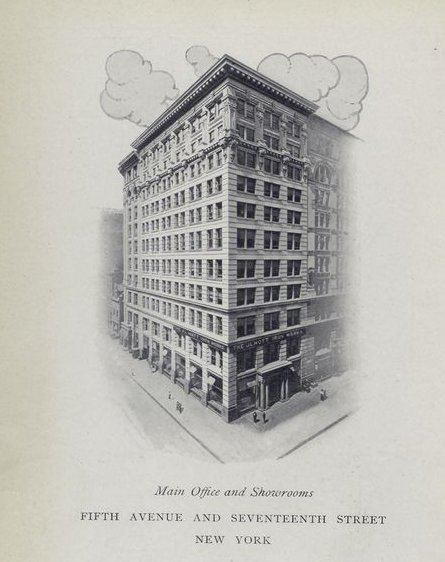 | ||
The J. L. Mott Iron Works was established by Jordan L. Mott in New York City in the area now called Mott Haven in 1828; the business was continued by his son, J.L. Mott, Jr. The elder Mott specialised in the manufacture of cooking-stoves fueled with anthracite coal. "Stoves and ranges, hot-air furnaces, parlor grates and fenders, fire irons, cauldrons and kettles, statuary, candelabra, fountains garden seats, vases, iron pipes or every kind, water tanks, &c" are mentioned in Benson John Lossing, History of New York City. Mott was interested in the patenting of inventions, but turned down President Buchanan's offer to make him Commissioner of Patents.
At the Centennial Exposition in Philadelphia, 1876, an elaborate cast iron fountain, 25 feet tall, was exhibited by the company. According to the exposition review, Gems of the Centennial Exposition all of the modeling of architectural forms, basins and figures was completed by artisans of the company. Figures were molded in clay, then cast in plaster to provide the moulds for the cast iron, in a process similar to bronze-founding. The lowest "pan" or basin was ten feet in diameter, said at the time to have been the largest such cast-iron basin in the United States. Some examples of the fountain figure The Boy with the Leaking Boot in various American and Canadian cities were purchased from the company.
The company relocated in about 1902 to Trenton, New Jersey.
Plumbing fixtures, including enameled cast iron bathtubs were also a J.L. Mott specialty.
In 1917, artist Marcel Duchamp selected a urinal from the J.L. Mott showroom in Manhattan and presented it as a work of art called "Fountain" at the Society of Independent Artists exhibition. This episode marks the introduction of the readymade in the history of modern art.
The Mott Iron Works company was established in 1984 in Massachusetts, United States, and has no connection with the earlier company.
